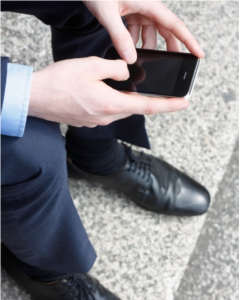- Category: August 2010
 In recent years QR codes are becoming more and more popular in the advertising industry. Appearing like squares with integrated labyrinths at first glance, they can be scanned with a mobile phone camera and in an instant reveal a link to a brand portal and the mobile Internet. Its main goal is gaining customer loyalty and developing an appropriate brand image.
In recent years QR codes are becoming more and more popular in the advertising industry. Appearing like squares with integrated labyrinths at first glance, they can be scanned with a mobile phone camera and in an instant reveal a link to a brand portal and the mobile Internet. Its main goal is gaining customer loyalty and developing an appropriate brand image.
The innovative access through scans via mobile phones can be placed on print media such as flyers, brochures, or magazines, allowing fast access to a brands' information via mobile Internet portals. But whoever wants to advertise successfully with QR codes should consider, besides a few other things, the unique characteristics of the technical components:
- First of all the purpose has to be specified, as well as what's most suitable for the image building. QR codes are almost predestined for brands related to lifestyle and tech-savvy target groups.
- The strength of mobile advertising is the integration of a traditional with an innovative digital approach: An early addition of the mobile channel in the design of integrated campaigns is necessary to get optimum participation and downloads from the campaign.
- The edited information on the mobile portal should meet the expectations of the target group. If you invest in a high-quality integrated campaign, but skimp on the mobile portal, you will disappoint your audiences.
- Codes that are too long, or have too much detail information after the code, may affect the technical function. Ideal is therefore a length of 30 characters and a 4 pixel margin per code.
- Advertising media with QR codes should always include an indication of where the necessary reader software can be downloaded. The software is usually already pre-installed in newer mobile phone models, but not on older devices.
- The design and implementation of mobile marketing campaigns and the construction of corresponding mobile portals should preferably be operated by the same provider in order to guarantee a smooth interaction of the two campaign components and a high quality implementation.
If you want to exploit the full potential of the mobile channel with QR codes, consider integrating them with the other marketing instruments and channels as each has its own strength and weaknesses. Marketing campaigns have to play in the offline, online, and mobile world at the same time. In doing so, QR codes can be the predestined point of contact. While online is mainly used by consumers and businesses to do research supporting a buying decision, the offline world consists of the physical presences like shops, but also the traditional media. Connect them by pushing mobile to action and provide a QR code on a billboard or print ad asking to text for more information.
By Daniela La Marca
You may want to read "Mobile tagging and what you should know about it", covered in the previous issue of Asian e-Marketing


